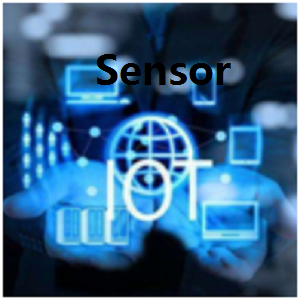Internet of things and sensor —— Soway Sensor
Eight out of ten people can't tell the difference between a sensor network and the Internet of things.
What is the Internet of things?
The initial concept of the Internet of things was put forward by the United States. It connects all objects through the domain name of the Internet of things to exchange information and communicate, so as to realize intelligent identification, positioning, tracking and so on. Of course, the official definition of the Internet of Things is that it is based on the Internet, which enables non-communicating objects to communicate with each other, and the process is called the Internet of Things.
Principles of Internet of things
The Internet of Things is based on the computer Internet, using RFID, wireless data communication and other technologies to construct an "Internet of Things" covering everything in the world. In this network, goods can "communicate" with each other without human intervention. Its essence is to use radio frequency automatic identification (RFID) technology, through the computer Internet to achieve the automatic identification of goods (goods) and information interconnection and sharing.
The concept of "Internet of things" broke the traditional thinking. The idea has been to separate physical infrastructure from IT infrastructure: airports, roads, buildings on the one hand, and data centres, PCS, broadband on the other. In the era of "Internet of things", reinforced concrete, cables, chips and broadband will be integrated into a unified infrastructure. In this sense, infrastructure is more like a new earth work site, on which the world operates, including economic management, production operation, social management and even personal life.
Characteristics of the Internet of things
One is comprehensive perception, that is, use RFID, sensor, qr code and other information of objects anytime and anywhere;
Second, reliable transmission, through the integration of various telecommunication networks and the Internet, the information of objects can be transmitted out in real time and accurately;
Third, intelligent processing, using cloud computing, fuzzy recognition and other intelligent computing technologies, massive data and information analysis and processing, intelligent control of objects.
Internet of things applications
Iot application widely, involves the intelligent transportation, environmental protection, government, public security, and peace, household, intelligent fire control, industrial monitoring, environmental monitoring, street lighting control, landscape lighting control lighting control, building lighting control, square, the old man care, personal health, floriculture, drainage monitoring, food traceability and the situation of the enemy reconnaissance and intelligence, and other fields.
The three main elements of sensor network: sensor, sensing object and observer
The key technology and characteristics of sensor network
WSN key technologies: network topology control, network protocol, network security, time synchronization, positioning technology, data fusion, data management, wireless communication technology, embedded operating system, application layer technology.
Features: large-scale network, self-organizing network, dynamic network, reliability network, application-related network, data-centric network.
Main application areas of sensor networks
Military applications, environmental observation and prediction systems, medical care, smart homes, building status monitoring, other applications (such as space exploration, intelligent dust, etc.).
The difference between sensor network and Internet of things
1. Broadly speaking
The Internet of things and sensor network basically have the same constituent elements, which are different expressions of the same thing. The Internet of things is closer to the essential properties of "things" than the sensor network, and emphasizes that information technology and equipment provide higher application services for "things". Sensor network (sensor network) is an objective description from the perspective of technology and equipment, and the elements of equipment and technology are relatively obvious.
For example, the sensor network is a scientific name, the Internet of things is a vulgar name; Or the sensor network is a name, the Internet of things is a nickname.
2. From the perspective of industry and users
It's called the Internet of things: in technology-enabled terms, it's called sensor networks. The Internet of things and the sensor network are the same thing, the essence of which is the sensor network of perception.
